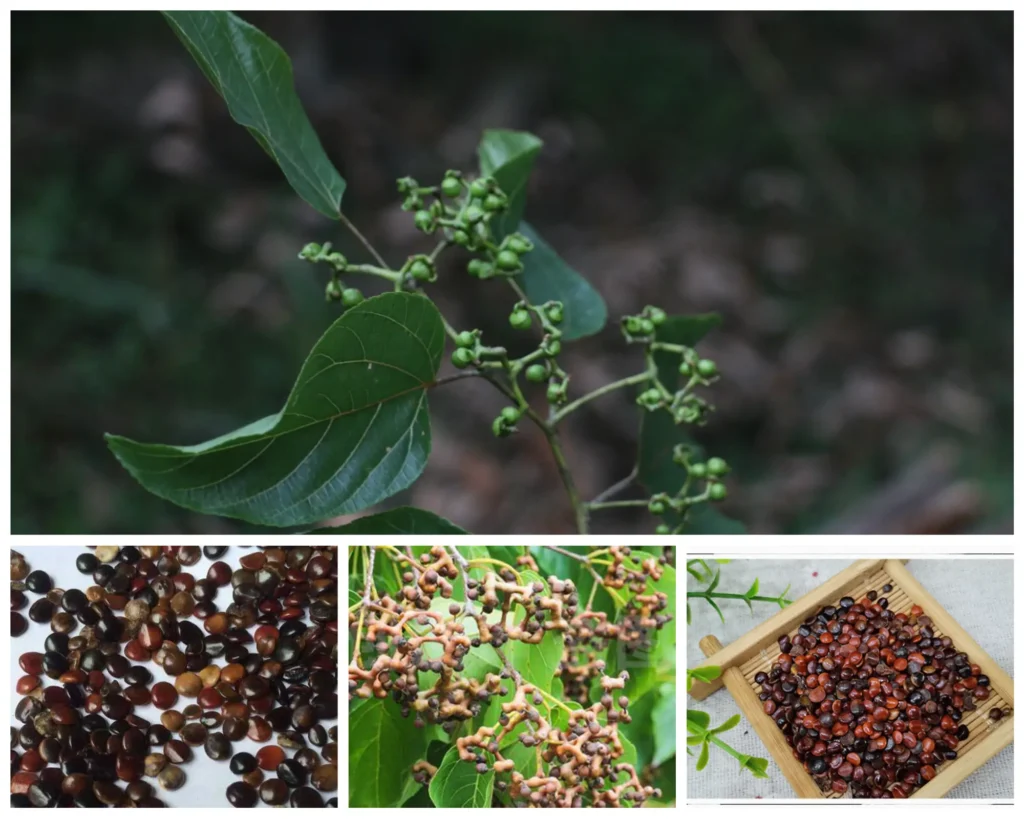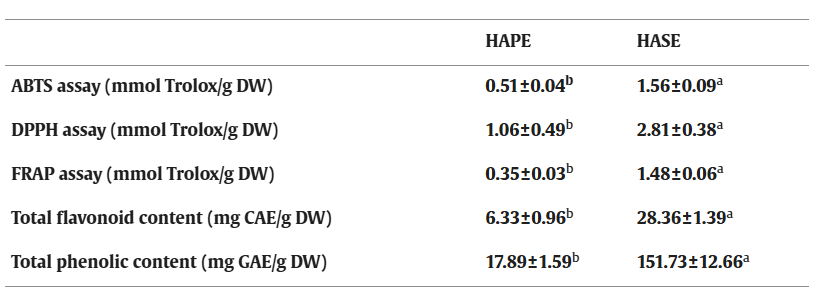Abstract
(1)Main Functions of Hovenia dulcis
A. Hangover and Liver Protection
- Activates alcohol dehydrogenase (ADH) and acetaldehyde dehydrogenase (ALDH)
- Reduces ethanol concentration in the body
- Enhances antioxidant enzyme activity and reduces lipid peroxidation
- Effective for treating alcoholism and protecting the liver
B. Anti-fatigue
- High doses of water extract reduce cortisol and adrenocorticotropic hormone
- Increases physical strength and endurance
- Effective active ingredients: flavonoids (quercetin and dihydromyricetin)
C. Hypoglycemic
- Reduces blood sugar and hyperglycemia
- Improves lipid metabolism disorders
- Active ingredients: total flavonoids, myricetin, and quercetin
D. Immunomodulatory and Anti-tumor Activity
- Stimulates splenocyte proliferation
- Enhances macrophage activity
- Inhibits tumor cell proliferation
(2)Suitable Supplement Forms
- Capsules
- Tablets
- Powders
- Liquid extracts
- Gummies
(3)Market Prospects/Advantages
- Health Benefits: Significant effects on liver protection, anti-fatigue, hypoglycemia, and immune modulation
- Growing Demand: Increasing consumer interest in natural and plant-based supplements
- Versatility: Can be formulated into various supplement types to meet different consumer needs
- Safety: Natural and non-toxic, suitable for long-term use
(4)Extraction Methods
- Water Extraction: Commonly used for anti-fatigue properties
- Alcohol Precipitation: Used for extracting polysaccharides and flavonoids
- Methanol Extraction: Ultrasonic and freeze-drying methods used to create Hovenia dulcis peduncle extract (HAPE) and seed extract (HASE)
- UPLC-QTOF-MS/MS Analysis: Qualitative analysis of active ingredients
- Targeting Nrf2/HO-1 Pathway: Reduces oxidative stress in liver cells
(5)Common Specifications
- Purity Levels: Extracts with standardized concentrations of active ingredients
- Concentration: Specific μg/mL in formulations for consistent efficacy
- Active Components: Flavonoids, polysaccharides, and other phenolic compounds

1. Health effects
A.Hangover and liver protection
Hovenia dulcis is one of the classic Chinese medicines for treating alcoholism and protecting the liver. It activates alcohol dehydrogenase (ADH) and acetaldehyde dehydrogenase (ALDH) by prolonging the time of drunkenness and shortening the sleep time caused by drunkenness, thereby reducing the concentration of ethanol in the body. The main mechanism of Hovenia dulcis's hangover and liver protection is to promote the metabolism of ethanol, reduce the content of ethanol in the blood, enhance the activity of antioxidant enzymes, and reduce the generation of lipid peroxidation products. Its material basis is flavonoids and fleshy fruit stalk polysaccharides. Hovenia dulcis and Hovenia dulcis fleshy fruit stalks can be used as medicine and can be eaten directly. They are safe and non-toxic for hangover and liver protection. The study found that by administering Hovenia dulcis fruit stalk polysaccharide (HDPS) 2 days in advance, the activities of antioxidant enzymes and in the liver of mice with alcoholic liver damage were significantly enhanced, and the production of lipid peroxidation products was reduced, indicating that HDPS may antagonize acute alcoholic liver damage caused by oxidative stress by enhancing the activity of antioxidant enzymes in the body, directly clearing, inhibiting lipid peroxidation, and chelating metal ions.
B.Anti-fatigue
The water extract of Hovenia dulcis fruit stalk has anti-fatigue activity. Experiments have shown that high doses of water extract can significantly reduce cortisol and adrenocorticotropic hormone in mice, thereby increasing the physical strength of swimming mice. Existing studies on the anti-fatigue effects of Hovenia dulcis water extract and alcohol precipitation extract and Hovenia dulcis ethyl acetate extract showed that flavonoid components (quercetin and dihydromyricetin) are the effective active ingredients of Hovenia dulcis that exert anti-fatigue effects.
C.Hypoglycemic
The researchers explored the effects of Calligonum jujube polysaccharide on blood glucose and blood lipids in alloxan-induced diabetic mice. The results showed that jujube polysaccharide can significantly reduce blood sugar in normal mice, significantly reduce hyperglycemia caused by adrenaline, effectively reduce fasting blood sugar (FBG), glycosylated hemoglobin (HbAlc), total cholesterol (TC), triglycerides (TG) in diabetic mice, increase high-density lipoprotein (HDL) content, significantly reduce fasting blood sugar in diabetic mice, and improve lipid metabolism disorders. The effects of total flavonoids, myricetin and quercetin on postprandial hyperglycemia were studied. The experiment showed that total flavonoids, myricetin and quercetin in Hovenia dulcis can alleviate postprandial hyperglycemia by inhibiting the activity of α-amylase and α-glucosidase, which indicates that total flavonoids, myricetin and quercetin can reduce postprandial hyperglycemia and are effective and promising functional foods for type 2 diabetes.
D.Immunomodulatory activity and tumor cell proliferation inhibition activity
HDPS was screened for in vitro immunomodulatory activity and anti-tumor activity by using cell experiments. The results showed that HDPS stimulated splenocyte proliferation, promoted macrophage synthesis, enhanced macrophage acid phosphatase activity and the ability of macrophages to phagocytize neutral red to varying degrees, and had a significant inhibitory effect on the proliferation of tumor cells BGC-823.
2. Production technology
Alcoholic liver disease (ALD) is the main cause of chronic liver disease affecting human health worldwide. Natural products can play a certain role in the treatment of ALD. Hovenia dulcis extract has been shown to be beneficial to ALD rats. However, there are few studies on the differences in functional active ingredients in Hovenia dulcis seeds (HAS) and Hovenia dulcis fruit stalks (HAP), so it is of great significance to further compare and explore the effects of the edible part of the fruit (HAP) and the dried and mature seeds of the fruit (HAS) on alcoholic liver injury.

3. Technical content
This study analyzed the active ingredients of HAP and HAS to explore their liver protective effects on LO2 cells and mouse alcohol injury models. HAP and HAS were crushed and sieved, and then extracted with 80% methanol ultrasonically and freeze-dried into powders. The powders were used as extracts in the experiment, namely, Hovenia dulcis peduncle extract (HAPE) and Hovenia dulcis seed extract (HASE). HAPE and HASE were qualitatively analyzed by UPLC-QTOF-MS/MS, and then the protective mechanism of the extracts on the liver was deeply explored by cytotoxicology and in vitro animal experiments. The main components of HAPE were caffeic acid, kaempferol and xanthophenol, and the main components of HASE were vitexin-2-O glucoside, ferulic acid hexanoside, quercetin and its glycosides. The antioxidant activity of phenolic compounds HASE was superior to that of HAPE in in vitro chemical and cell-based antioxidant activities. The results showed that alcohol enhanced the production and accumulation of reactive oxygen species (ROS), which further damaged hepatocytes and led to liver damage. HASE and HAPE may reduce oxidative stress in alcoholic liver damage by targeting the Nrf2/HO-1 pathway. These results provide evidence that HAPE and HASE have important active substances with liver protective effects. Therefore, Hovenia dulcis may be developed as a potential functional food ingredient to protect the liver from alcohol damage.




